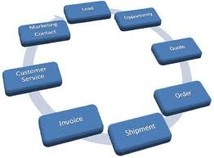News and Latest Events
Here you will find the latest information on our company and industry news and views.
The key to improving your STP (Straight Through Processing) capability...
The concept of Straight Through Processing (STP) has been over particular interest to me throughout my career in Industry and Banking. Traditionally the principles of STP have been applied in the operational processes associated with high volume transactions particularly within the back-office processing functions of investment and retail banks.
Wikipedia describes STP as an enabling mechanism for the trade process incapital markets and payment transactions to be conducted electronically without the need for re-keying or manual intervention, subject to legal and regulatory restrictions. This concept sounds simple, believe me when I say how many large and supposedly well managed organisation, get this so horribly wrong.
Essentially a strong STP mechanism means that your product transforms from its basic constituent (raw materials, sales pitch) through to its final usable or deliverable form with minimal manual intervention. In a factory environment this could represent a fully automated production line or in a service type environment a successful quote.
In my experience there are a few key factors that will determine the efficiency and ultimately cost of your organisation’s STP capability:
- Discipline and procedures controlling the individual, group or function that initiates the 1st or early part of the process
- Quality of the underlying static, reference or hard coded data that supports your process
- Homogeneity of your product or service that you are ultimately trying to deliver
- Quality and transparency of your front to back process infrastructure – systemmic and manual
Please contact us to see how we can help your organisation improve STP rates and process efficiency.
Emerging trends in off-shoring...
- The transition up the value chain from “process-based” services (application testing and maintenance and, increasingly, development) towards “conceptual” services (application architecture, financial analysis, legal research, etc.) and even “innovative” services (especially R&D)
- The relative cost of labour – onshore vs offshore and the impact of exchange rates on cost differentials
- The increasing availability and lower cost of local pools of labour – increased unemployment, resource migration within the EU
- Increased fiscal investment to support domestic training and education – the creation of a higher value add workforce
These are but a few of the more recent influences that your organisation may wish to consider before taking the first step towards off-shoring processes or functions.
Please contact us and we can discuss your requirements and specific considerations.



